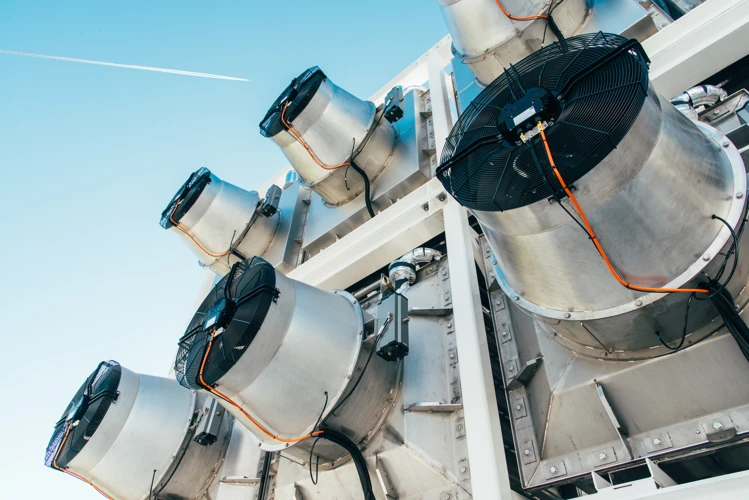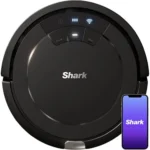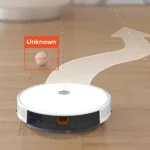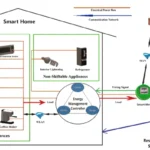As we strive towards a more sustainable future, it’s becoming increasingly important to reduce our carbon footprint in all aspects of our lives. And while many of us may not realize it, traditional vacuum cleaners are actually big contributors to our carbon footprint. However, there is a solution. Smart vacuum cleaners offer advanced features that not only make cleaning more efficient, but also help reduce the amount of energy we consume. In this article, we’ll explore 10 ways you can use smart vacuum cleaners to reduce your carbon footprint and make a positive impact on the environment. So, let’s dive into how you can make your cleaning routine more eco-friendly and efficient!
Why Use a Smart Vacuum Cleaner?
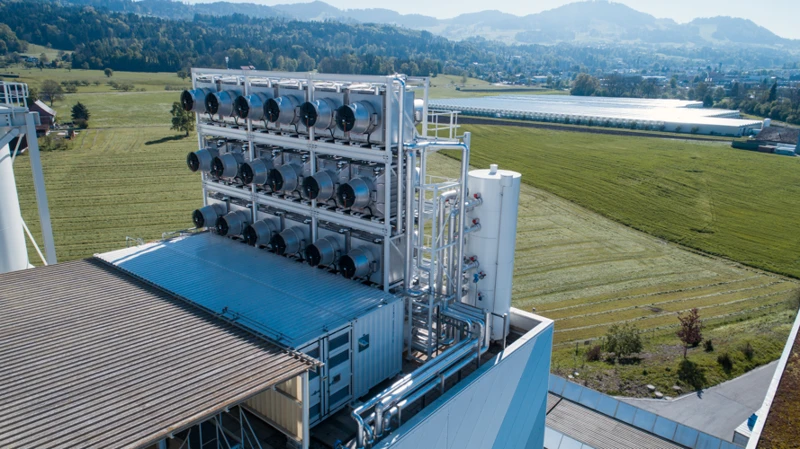
Smart vacuum cleaners are becoming increasingly popular due to their advanced features and energy efficiency. These machines are designed to make cleaning easier and more convenient while also reducing their impact on the environment. In this section, we’ll explore some of the reasons why you should consider using a smart vacuum cleaner in your home.
1. Energy Efficiency: One of the primary benefits of using a smart vacuum cleaner is that they are more energy-efficient compared to traditional models. Smart vacuums are designed with energy-saving features such as energy-efficient motors, which consume less power for the same amount of suction power. This means that you can save on your energy bills and reduce your carbon footprint at the same time.
If you want to learn more about how smart vacuums can help reduce your energy consumption, check out our article on energy-saving tips for smart vacuums.
2. Smart Features: Another reason to use a smart vacuum cleaner is the advanced features they offer. These machines are equipped with high-tech sensors that help them navigate around your home and clean more efficiently. They also have features like voice control, schedule cleaning, and remote control, which make cleaning more convenient than ever before.
If you’re interested in learning more about the eco-friendly features of smart vacuums, check out our article on eco-friendly features of smart vacuums.
3. Advanced Filtration Systems: Smart vacuum cleaners are also designed with more advanced filtration systems than traditional models. These machines can trap tiny particles like pollen, pet dander, and dust mites, which can pose a health risk to certain people. By trapping these particles, smart vacuums can improve the air quality in your home and make it a healthier place to live.
For more information on how smart vacuums can reduce their environmental impact, check out our article on the environmental impact of smart vacuums.
Smart vacuum cleaners are a great investment for anyone who wants to reduce their carbon footprint and save on their energy bills. With their energy-efficient motors, advanced features, and filtration systems, these machines can make cleaning more convenient, efficient, and eco-friendly. So if you’re in the market for a new vacuum cleaner, consider investing in a smart vacuum that can help you make your home a healthier and more sustainable place to live.
1. Energy Efficiency
When it comes to reducing our carbon footprint, energy efficiency is one of the key factors to consider. Luckily, with the latest advances in technology, smart vacuum cleaners are becoming increasingly more energy-efficient. These vacuums are designed to consume less energy while still providing powerful suction and efficient cleaning. By using an energy-efficient smart vacuum, you can lower your energy bills, reduce your carbon footprint, and contribute to a cleaner environment. To learn more about smart vacuums and their energy consumption, check out our article on smart vacuum energy consumption.
2. Smart Features
Smart vacuums come with a variety of features that can help reduce your carbon footprint and save energy. Here are some of the top smart features to look for in a vacuum cleaner:
- Programmable cleaning: Many smart vacuums have the ability to schedule when they clean. This means you can set your vacuum to run during off-peak hours when energy rates may be lower, or when you’re away from home so it doesn’t consume energy unnecessarily. With this feature, you can reduce the amount of energy your vacuum uses without sacrificing cleanliness.
- Intelligent navigation: Smart vacuums use optical sensors, cameras, and laser rangefinders to navigate and clean your home. This technology allows them to avoid obstacles, change direction when needed, and clean more efficiently. With their advanced navigation capabilities, smart vacuums can complete their cleaning cycles quickly and effectively, minimizing the amount of energy they consume.
- Automatic power adjustments: Some smart vacuums are equipped with sensors that detect the type of surface they’re cleaning and adjust their suction accordingly. This means they won’t use more power than necessary on hard floors or low-pile carpets, for example. By automatically adjusting their power consumption, these vacuums reduce the amount of energy they use while still providing powerful suction.
- Remote control: Many smart vacuums come with a smartphone app that allows you to control them from anywhere. With this feature, you can start or stop your vacuum, change its cleaning modes, and even receive notifications when it’s done cleaning. This means you can optimize your vacuum’s energy consumption by only running it when it’s necessary and avoiding overlapping cleaning cycles.
- Self-charging: Some smart vacuums are designed to return to their dock when their battery is running low. This means they can recharge themselves without any assistance, ensuring they’re always ready when you need them. With this feature, you won’t have to waste energy by keeping your vacuum plugged in all the time; instead, it will be able to recharge itself as needed.
Incorporating these smart features into your cleaning routine can help reduce your carbon footprint, lower your energy costs, and make your life easier. Whether you’re looking for a vacuum with a programmable cleaning schedule, intelligent navigation, automatic power adjustments, remote control, or self-charging capabilities, there are plenty of energy-efficient smart vacuums on the market that can meet your needs. By choosing a vacuum that incorporates these features, you can enjoy a cleaner home while minimizing your impact on the environment.
3. Advanced Filtration Systems
When it comes to reducing your carbon footprint with a smart vacuum cleaner, one crucial feature to look for is advanced filtration systems. These types of filters can capture tiny particles and pollutants in the air, preventing them from being released back into your home environment.
HEPA Filters: High-Efficiency Particulate Air filters, or HEPA filters, are capable of trapping particles as small as 0.3 microns. This makes them extremely effective at capturing dust, pollen, and allergens. Look for a smart vacuum cleaner that features a HEPA filter, and be sure to replace it regularly to ensure optimal performance.
Cyclonic Filtration: Cyclonic filtration is an innovative technology that uses centrifugal force to separate dust and debris from the air. This type of filtration is more efficient than traditional filters, as it doesn’t rely on a porous material to trap particles. By keeping your vacuum’s filters clean, you can help to maintain its suction power and improve its overall performance.
Carbon Filters: Some smart vacuum cleaners feature carbon filters, which are designed to absorb odors and gases. If you have pets, for example, a smart vacuum with a carbon filter could help remove pet odors from your home.
By investing in a smart vacuum cleaner with advanced filtration systems, you can help to improve the air quality in your home and reduce your carbon footprint. Make sure to keep the filters clean and replace them regularly for optimal performance. If you want to learn more about other energy-saving features of smart vacuums, you can check out our article about energy-smart vacuums.
10 Tips for Reducing Carbon Footprint with Smart Vacuums
As individuals, we have a responsibility to take steps towards a more sustainable world. One way we can do this is by using smart vacuum cleaners to reduce our carbon footprint. These high-tech cleaning appliances are not only efficient and convenient, but also environmentally friendly. In this section, we’ll provide a guide with 10 tips for reducing your carbon footprint with smart vacuums. By implementing these tips, you can help reduce your household’s carbon footprint while keeping your living space looking its best. Let’s get started! And to learn more about the benefits of energy-saving smart vacuums and how they work, be sure to check out our previous article.
1. Upgrade to an Energy Star Certified Vacuum
When it comes to reducing your carbon footprint with smart vacuums, upgrading to an Energy Star Certified vacuum is an excellent place to start. Energy Star is a program run by the U.S. Environmental Protection Agency (EPA) that certifies products as energy-efficient, helping consumers reduce energy consumption and save money on their utility bills.
An Energy Star Certified vacuum means that it meets strict energy efficiency guidelines set by the EPA. Such vacuums use less energy than traditional models and ultimately help you to minimize your carbon footprint while saving you money on your energy bills.
The primary factor contributing to the energy efficiency of vacuums is the motor. Vacuum motors use a lot of energy, but energy-efficient motors can significantly reduce energy consumption. In addition to using an energy-efficient motor, manufacturers must also incorporate other technologies to qualify for the Energy Star rating, such as power management systems that automatically reduce energy consumption when the vacuum is not in use.
One of the most significant benefits of upgrading to an Energy Star Certified vacuum is that you don’t have to sacrifice performance for energy efficiency. These vacuums still have powerful suction capabilities that allow you to clean your floors effectively.
In addition to purchasing an Energy Star Certified vacuum, you should also consider smart vacuum maintenance to reduce energy consumption. For example, maintaining clean filters and brushes and regularly emptying the dustbin improves a vacuum’s airflow and suction, reducing the amount of energy needed to clean your floors.
By upgrading to an Energy Star Certified vacuum and following proper maintenance techniques, you can significantly reduce your carbon footprint while keeping your home clean.
2. Schedule Regular Cleaning Times
One of the easiest and most effective ways to reduce your carbon footprint with a smart vacuum cleaner is to schedule regular cleaning times. By doing this, you can ensure that your floors and carpets are always free from dust and dirt, all while optimizing the energy usage of your vacuum.
Here are some tips for scheduling regular cleaning times:
- Create a cleaning schedule: Your cleaning schedule should be tailored to your individual needs, taking into consideration things like household size, pets, and activity level. Once you have a schedule, make a habit of sticking to it every week.
- Clean during off-peak hours: Try to schedule your cleaning during off-peak hours when energy use is lower. This will help to reduce the strain on the power grid and lower your carbon footprint.
- Delegate cleaning tasks: If you have a smart vacuum with multiple cleaning modes, delegate cleaning tasks based on the specific needs of each area in your home. For example, use the spot mode for high-traffic areas and the edge mode for corners and edges.
- Maximize cleaning efficiency: Use the cleaning time to its fullest by optimizing how you clean. For instance, clean from top to bottom and in a specific order to reduce the likelihood of having to go over the same area twice.
By scheduling regular cleaning times and optimizing how you clean, you can ensure that your smart vacuum cleaner is operating efficiently while keeping your home’s indoor air quality healthy for you and your family. Additionally, you’re doing your part to help minimize your carbon footprint and reduce the impact of climate change.
3. Optimize Emptying and Replacing Dustbins
When it comes to reducing your carbon footprint with smart vacuums, optimizing emptying and replacing dustbins is a critical step. It’s essential not just to clean effectively but also to do so in an eco-friendly way. Here are some tips to make sure you’re disposing of dust and debris correctly:
| Tip | Description |
|---|---|
| 1. | Empty the dustbin before it’s completely full. Don’t let the bin overflow and cover the filters, which can hinder cleaning and reduce suction power. When the bin is full, your vacuum uses more energy to clean, and this leads to wastage. |
| 2. | Don’t throw away the dustbin along with the trash. Instead, empty the contents in a compost bin if it contains biodegradable waste such as hair and food scraps. If the bin has non-biodegradable debris, dispose of it in a designated waste bin, such as recyclable trash bins or landfill bins. |
| 3. | Replace the dustbin and filters at the recommended intervals. Keeping the filters and bins clean and replacing them when necessary can improve the machine’s performance and save energy. You can even buy washable filters to avoid continuous replacements, reducing your carbon footprint even further. |
| 4. | Keep spare dustbins and filters handy. In case of an emergency, or if you don’t have time to replace and wash the bin, having spare dustbins can help keep the cleaning process eco-friendly and reduce downtime. |
By optimizing emptying and replacing dustbins, you can significantly reduce your carbon footprint while using a smart vacuum cleaner. It’s a simple change that can have a considerable impact on the environment, and it’s easy to implement.
4. Use Eco-Friendly Cleaning Products
One of the simplest ways to reduce your carbon footprint is to switch to using eco-friendly cleaning products when vacuuming. Not only are they better for the environment, but they’re also healthier for your home and your family. Here are some eco-friendly cleaning products you can use with your smart vacuum cleaner:
| Product | Description |
|---|---|
| Vinegar | Use white vinegar to clean hard floors and carpets. It’s a safe, natural cleaner that doesn’t leave any residue. |
| Baking Soda | Sprinkle baking soda on carpets before vacuuming to help neutralize odors. It’s also a great natural cleaner for other surfaces. |
| Citrus | Use citrus peels or essential oils to add a fresh scent to your vacuum cleaner. You can add them to the dustbin or sprinkle them on carpets before cleaning. |
| Biodegradable Cleaners | Look for biodegradable, plant-based cleaners that are safe for the environment. They’re often available in concentrated formulas, which means less packaging waste. |
| Reusable Cleaning Cloths | Instead of using disposable paper towels, choose reusable cleaning cloths made from bamboo, cotton, or other sustainable materials. Wash and reuse them to reduce waste. |
By using eco-friendly cleaning products with your smart vacuum cleaner, you can help reduce your carbon footprint and make a positive impact on the environment. Not only will you be doing your part to reduce waste and pollution, but you’ll also be keeping your home cleaner and healthier for your family. So why not give it a try and see the difference for yourself?
5. Select the Right Attachment for the Task
When it comes to reducing your carbon footprint with a smart vacuum cleaner, one of the simplest things you can do is select the right attachment for each task. By doing so, you can work more efficiently and use less energy in the process. Here are a few tips on which attachment to choose for different surfaces:
- Bare floors: For hardwood, tile, or laminate floors, use a hard floor tool or a combination tool. Avoid using a rotating brush on these surfaces, as it can scratch or damage them.
- Low-pile carpets: For short, dense carpets, use a combination tool. This attachment has a rotating brush that agitates the carpet fibers to remove dirt and debris.
- High-pile carpets: For thick, plush carpets, use a power brush. This attachment has a motorized brush that can effectively clean deep into the fibers.
- Furniture: For upholstery or other fabric surfaces, use an upholstery tool. This attachment has a wide, flat head that can effectively pick up dust and debris.
- Tight spaces: For corners, crevices, and other hard-to-reach areas, use a crevice tool. This attachment has a long, narrow nozzle that can easily fit into tight spaces.
By selecting the right attachment for each task, you can clean more effectively and efficiently. This means using less energy and reducing your carbon footprint. So next time you’re vacuuming, take a moment to consider which attachment is best for the job at hand.
6. Vacuum High-Traffic Areas First
Vacuuming high-traffic areas first is a great way to reduce your carbon footprint with smart vacuums. These areas tend to accumulate the most dirt and debris, which can make your vacuum work harder and use more energy if cleaned later.
Here are some tips for vacuuming high-traffic areas first:
- Start with the Entryways: Begin your cleaning process by tackling the entryways. This area often contains the most dirt, dust, and leaves. It’s essential to start here to prevent the dirt from spreading throughout the house.
- Clean the Kitchen: The kitchen is another high-traffic area that needs to be cleaned frequently. Wipe down countertops and sweep the floor before you start vacuuming. If you have a smart vacuum, you can program it to start cleaning while you’re doing other things.
- Move on to the Living Room: The living room is a high-traffic area that can accumulate a lot of dirt and debris. Start by moving the furniture out of the way, then use the attachments to clean the upholstery and other hard-to-reach places. Be sure to vacuum under the cushions and around the edges of the room.
- Don’t Forget the Stairs: Stairs are often neglected areas when it comes to cleaning, but they can be one of the dirtiest places in your home. Use the attachments on your vacuum to clean the treads and risers carefully. Remember to clean the baseboards and corners as well.
- Finish with the Bedrooms: Finish cleaning with the bedrooms since they have less traffic. Vacuum under the bed and furniture and use attachments to get hard-to-reach areas. Don’t forget to empty the dustbin when you’re finished.
Remember that vacuuming high-traffic areas first not only reduces your carbon footprint, but it also keeps your home cleaner and healthier. With smart features, cleaning your home can be convenient and quick while reducing your energy consumption.
7. Turn Off the Vacuum When Not in Use
When it comes to reducing carbon footprint with smart vacuum cleaners, one of the most effective ways is to simply turn off the vacuum when it’s not in use. Many people leave their vacuum running while they move furniture or take a break, but this uses unnecessary energy and increases your carbon footprint.
To help you remember to turn off your vacuum, try placing it on a power strip with a switch. When you’re finished cleaning, simply flip the switch to turn off all of your cleaning tools at once. Here are some additional tips to keep in mind:
| Tips for Turning Off Your Vacuum |
| 1. Turn off the vacuum when you’re finished cleaning a room. |
| 2. Pause the vacuum when you need to take a break or move furniture. |
| 3. Avoid leaving the vacuum running while you answer the phone or doorbell. |
By turning off your vacuum when you’re not using it, you can conserve energy and reduce your carbon footprint. This simple step can help you save money on your energy bill while also making a positive impact on the environment.
8. Keep Filters and Brushes Clean
One of the easiest ways to reduce carbon footprint with smart vacuum cleaners is to keep the filters and brushes clean. Filters and brushes that are clogged with dirt and debris can reduce the suction power, making the vacuum consume more energy to do the same job. This not only increases your electricity bills but also harms the environment by emitting more carbon dioxide.
Regularly cleaning the filters and brushes of your smart vacuum cleaner can help restore its performance and longevity. You should also replace the filters and brushes, as necessary, to ensure the vacuum is working at its optimal level.
Here are some tips that can help you keep the filters and brushes of your smart vacuum cleaner clean and functioning properly:
| Tip | Description |
|---|---|
| 1 | Read the manufacturer’s instructions on how to clean the filters and brushes of your vacuum cleaner. |
| 2 | Clean the filters and brushes of your smart vacuum cleaner after each use or at least once a week to maintain good suction power. |
| 3 | Remove any hair, dirt or dust that has accumulated on the brushes using a comb or scissors. Be sure to unplug the vacuum before cleaning the brushes. |
| 4 | Wash the filters with water and allow them to air dry completely before reinstalling them. Do not use a dryer or any heat source to dry them as they can get damaged. |
| 5 | Replace the filters and brushes regularly as per the manufacturer’s instructions. This will ensure that your vacuum cleaner continues to operate efficiently and keep the air in your home clean and healthy. |
By following these simple tips, you can keep the filters and brushes of your smart vacuum cleaner clean and maintain good suction power. This will help you reduce your carbon footprint and avoid wasting energy while keeping your home clean and healthy.
9. Recycle Old Vacuums Responsibly
When it’s time to get rid of an old vacuum cleaner, it’s important to do so responsibly. Simply throwing it in the trash can contribute to environmental waste and pollution. Fortunately, there are several ways to recycle old vacuums and reduce your carbon footprint. Here are some options for recycling old vacuums responsibly:
| Method | Description |
|---|---|
| 1. Retailer Recycling Programs | Many retailers offer recycling programs for old electronics, including vacuum cleaners. These programs allow you to bring your old vacuum to a participating retailer, who will recycle it for you. Some retailers even offer discounts on new vacuums when you bring in your old one. |
| 2. Local Recycling Centers | Check with your local recycling center to see if they accept vacuum cleaners for recycling. Make sure to confirm any specific requirements for the materials or parts that need to be removed before bringing it in. Some centers may also offer curbside pickup for electronics recycling. |
| 3. Manufacturer Take-Back Programs | Some vacuum manufacturers have take-back programs that allow you to send your old vacuum back to the manufacturer for recycling. This is a great option for those who may not have access to a local recycling center or may not want to transport the vacuum themselves. |
| 4. Donations | If your vacuum is still in good working condition, consider donating it to a local charity or organization. This will help someone in need while also keeping the vacuum out of the landfill. Just be sure to confirm that the organization accepts vacuum donations before dropping it off. |
By recycling old vacuums responsibly, you can reduce your carbon footprint and make a positive impact on the environment. Consider one of these options the next time you need to dispose of an old vacuum cleaner.
10. Consider Smart Features for Energy Savings
As we move towards a more energy-efficient future, smart vacuum cleaners have become increasingly popular. Manufacturers are incorporating advanced features and technologies that help reduce energy use and minimize the carbon footprint.
Here are some of the best smart features you should consider for energy savings.
- Digital mapping: Smart vacuums equipped with digital mapping technology use advanced sensors and lasers to scan and map your home’s layout, learning the most efficient cleaning path. By optimizing the cleaning path, these vacuums can shorten the cleaning time and save energy.
- Auto-scheduling: Some smart vacuums come with auto-scheduling features, allowing you to set a cleaning schedule in advance. By planning the cleaning sessions, you can ensure that the vacuum operates at the most convenient and energy-efficient time.
- App controls: An increasing number of high-tech vacuums come with their dedicated mobile apps. These apps let you control the vacuum from your smartphone, schedule cleaning times, and view cleaning history. By managing the vacuum remotely, you can start it only when needed, saving energy and reducing costs.
- Multiple cleaning modes: A smart vacuum with different cleaning modes allows you to choose which mode suits the cleaning task at hand. For example, if you have a hardwood floor, you can select the vacuum’s mode that is designed to clean that type of surface. Efficient cleaning minimizes energy consumption and improves cleaning effectiveness.
- Auto-adjusting suction: The smart vacuum cleaners equipped with this feature automatically adjust the suction power as needed, based on the surface they are cleaning. By conserving energy and minimizing wasted suction power, these vacuums can reduce carbon footprint and save power.
By considering these smart features in your next vacuum purchase, you can not only improve your cleaning ability but also reduce your carbon footprint, lower energy consumption, and save money on your power bills.
Conclusion
In conclusion, it is clear that smart vacuum cleaners are an effective solution for reducing our carbon footprint. By being more energy-efficient, incorporating smart features, and advanced filtration systems, we can significantly cut down on our energy consumption and the amount of waste we produce.
With the 10 tips outlined in this article, we can further maximize the sustainability benefits of our smart vacuum cleaners. Upgrading to an Energy Star certified vacuum, scheduling regular cleaning times, and optimizing dustbin emptying and replacing are just a few examples of small changes that can have a big impact.
In addition, using eco-friendly cleaning products, selecting the right attachment for each task, and vacuuming high-traffic areas first can help us reduce waste and increase efficiency at the same time. These tips not only benefit the environment but also our health and the lifespan of our vacuum cleaners.
By turning off the vacuum when not in use, keeping filters and brushes clean, and recycling old vacuums responsibly, we can further extend the sustainability benefits of our smart vacuum cleaners. And lastly, considering smart features for energy savings is a proactive approach to ensuring our homes are as sustainable as possible.
Overall, by following these 10 tips, we can all play a small but crucial role in reducing our carbon footprint and contributing to a more sustainable future. Let’s take action today and make a difference for a better tomorrow.
Frequently Asked Questions
What is a smart vacuum cleaner?
A smart vacuum cleaner is a vacuum that uses advanced technology to clean your home more efficiently and effectively. They can be controlled using a mobile app or virtual assistant and often have features like scheduling and mapping capabilities.
How do smart vacuum cleaners reduce carbon footprint?
Smart vacuums are designed to be energy efficient and often have features like scheduling, sensors, and advanced filtration systems that reduce the need for multiple cleanings. Using a smart vacuum can also promote efficient cleaning, which reduces energy waste and carbon emissions.
How do I choose the right smart vacuum cleaner?
Consider factors like your home’s size, floor type, and specific cleaning needs when selecting a smart vacuum. Look for features like suction power, battery life, and compatibility with other smart devices. Researching reviews and ratings can also be helpful.
What does Energy Star certification mean?
Energy Star certification is a certification program that recognizes energy-efficient products that meet certain standards for reducing energy consumption and greenhouse gas emissions. It is a reliable way to ensure your smart vacuum cleaner is efficient and environmentally friendly.
What are some eco-friendly cleaning products that can be used with smart vacuums?
Baking soda, vinegar, and lemon juice are all natural cleaning solutions that can be used with smart vacuums. There are also eco-friendly cleaning products available for purchase that are specifically designed to be used with vacuums.
How do I properly dispose of an old vacuum cleaner?
You can recycle your old vacuum cleaner through retailers like Best Buy or through your local recycling center. Consider donating it to a nonprofit organization or community center if it is still in working condition.
Will turning off my smart vacuum when not in use make a significant difference?
Yes, turning off your vacuum when not in use can significantly reduce energy waste and carbon emissions over time. It is a small change that can have a big impact on your carbon footprint.
Do smart vacuums require more maintenance than traditional vacuums?
Smart vacuums do require some maintenance, like cleaning or replacing the filter and emptying the dustbin. However, they often have features that make maintenance easier and more accessible, like automatic alerts and reminders.
Can I use a smart vacuum with Alexa or Google Home?
Yes, many smart vacuum cleaners are compatible with virtual assistants like Alexa or Google Home, allowing for voice control and making cleaning even more convenient.
Are smart vacuum cleaners worth the investment?
While smart vacuum cleaners may have a higher up-front cost than traditional vacuums, they are often designed to be more energy efficient and longer-lasting, which can save money and reduce carbon footprint in the long run. Additionally, they offer added convenience and advanced features that can make cleaning easier and more efficient.
